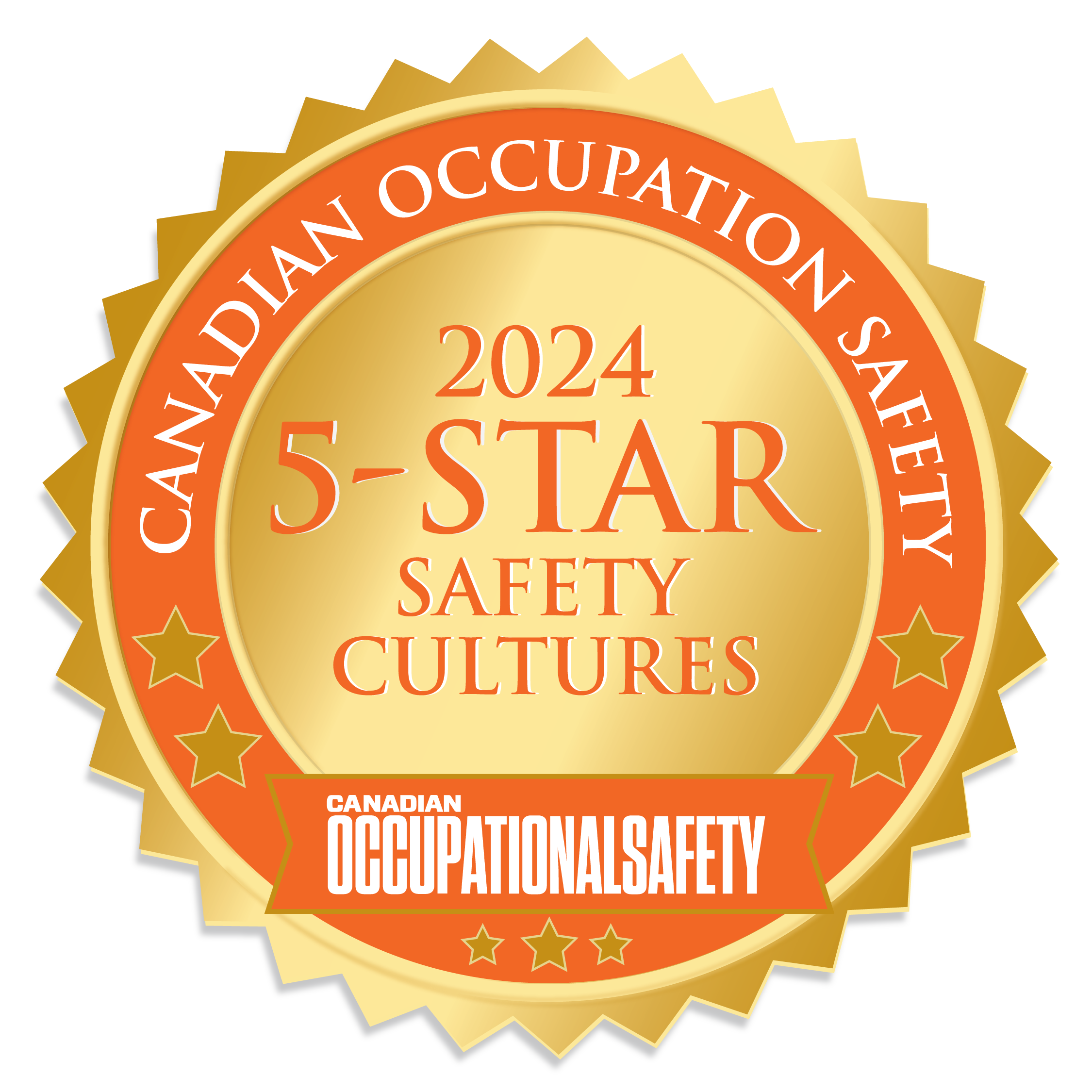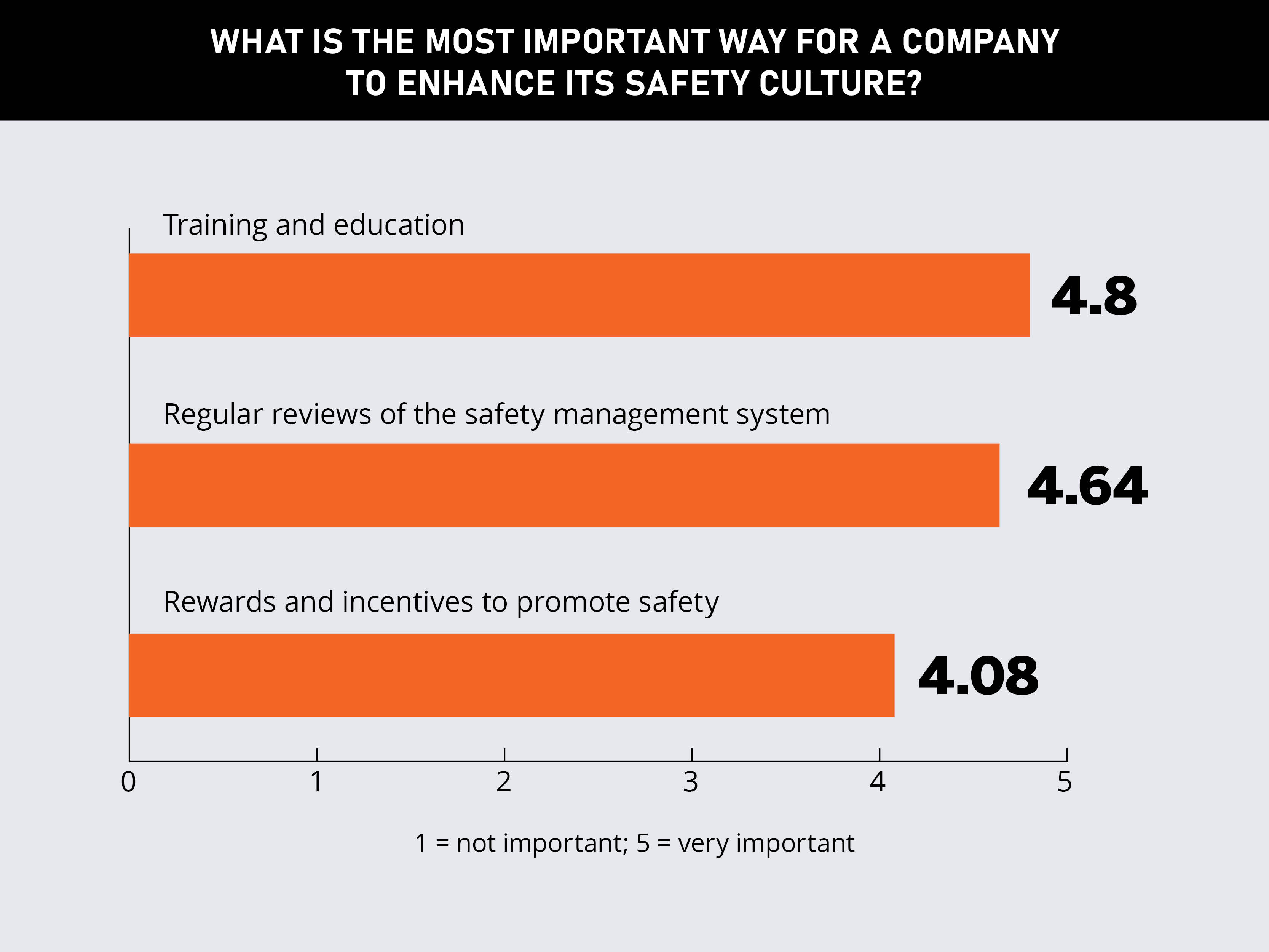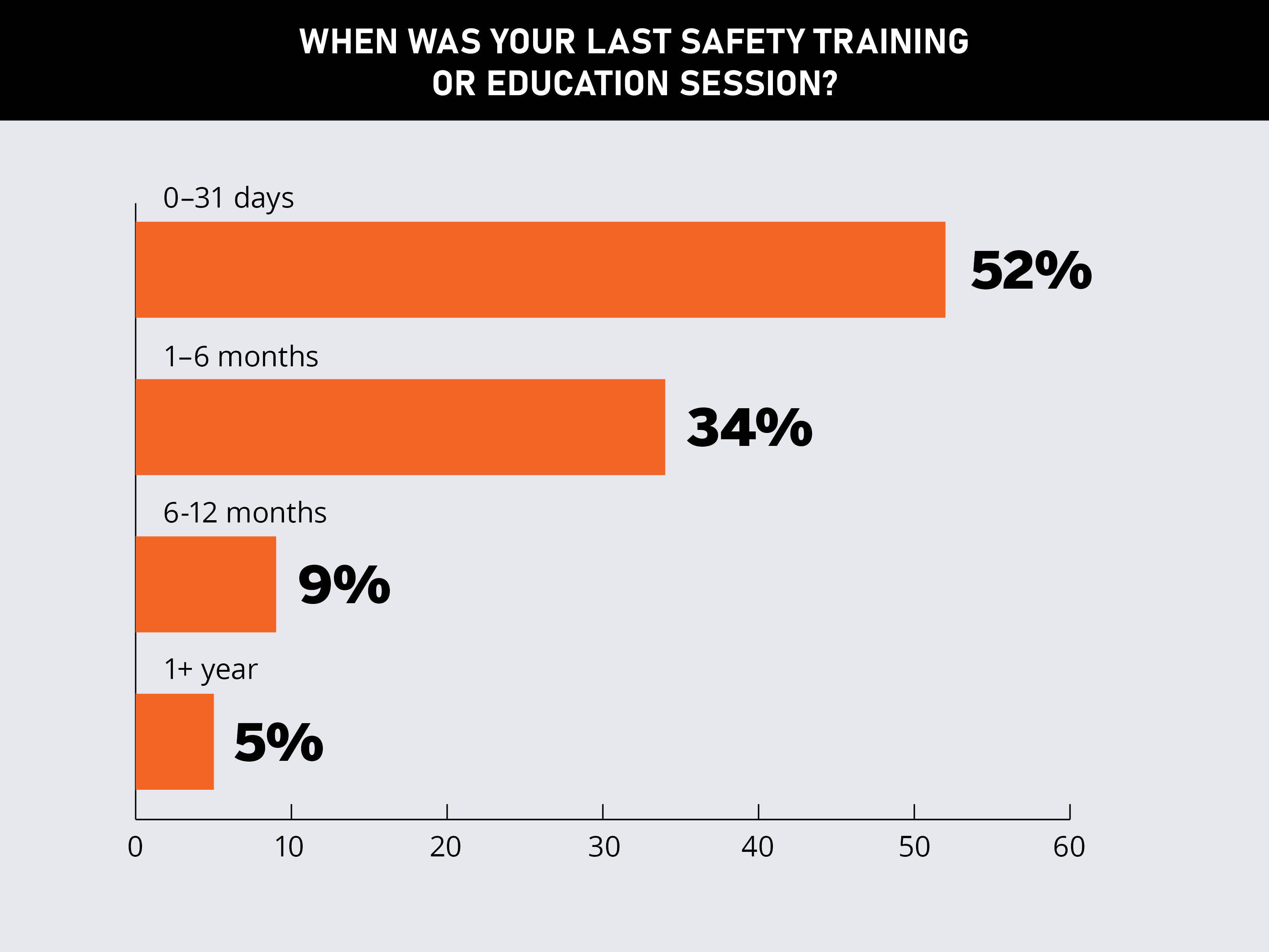

Jump to winners | Jump to methodology
The recipients of Canadian Occupational Safety’s 5-Star Safety Cultures award for 2024 are recognized for their outstanding commitment to championing safety excellence and remaining vigilant over the well-being of their employees.
Dani Desautels, director of safety and health at Price Industries, listed the key factors needed to establish industry-leading standards.
She says, “Five-star culture in safety is workers having the knowledge and confidence to see a concern or hazard and being comfortable enough to report it. It is when employees understand they are playing a vital role in the corrective actions required to address hazards.”
For all the 2024 winners, safety is deeply ingrained in their ethos.

As Ontario’s safety regulator, the Technical Standards and Safety Authority (TSSA) prioritizes safety culture in the workplace through stringent training. Whether in office or on-site, TSSA employees must complete a 25-course safety training program, with regular refreshers every two to three years. Courses include:
Occupational Health and Safety Responsibilities and Due Diligence
Workplace Hazardous Materials Information System (WHMIS)
Defensive Driving Fundamentals
Asbestos Awareness
Electrical Safety
Slips and Trips
TSSA employees frequently visit client sites, posing a challenge for Cheryl Fournier, human resources people leader and business partner, who emphasizes the importance of consistent safety standards across diverse locations.
“We might be at organizations that have different safety protocols than what we have. So, we make sure our employees are operating at the highest standard to ensure they are safe,” she says. “Recently, on an inspection, one of our inspectors noticed someone from another organization not wearing the right equipment. Our inspector refused to work with them because they were not properly prepared for the environment.”
Due to TSSA’s rigorous standards, the firm recorded a decrease in incidents from 2019 to 2023:
near misses: 19-5
first-aid incidents: 5-3
lost time incidents: 1-0
TSSA also underscores the value of inclusivity.
Fournier says, “Learning happens in many ways, so each one of our trainings is provided as a transcript and audio file. Within our video courses, information could be presented through a story or a role-play of characters.”


At its Canadian base in Oakville, Ontario, the global automation company is dedicated to reducing incidents through Safety Walk and Talks. The initiative involves supervisors touring factory floors they’re less familiar with, acting as fresh eyes to spot safety issues.
“Walk and Talks are key for us. On average, we do about 2,000 a year,” says Nada Vuckovic, head of environment, health and safety and sustainability officer. “Each time supervisors go out, we have an app where they can pencil in their observations. It gives us a lot of valuable data because it allows employees to say if something they’re seeing is unsafe and what was done to correct it, whether there was coaching or mentoring provided.”
Rather than relying on a top-down approach, Vuckovic believes that safety should involve all employees. To encourage active participation in safety discussions, Siemens incorporates “safety moments” into its leadership meetings, prompting employees to share their experiences on various health and safety topics.
The company’s STAR rewards program, which awarded 1.4 million worth of reward points to employees last year, incentivizes staff to contribute to creating a safe workspace by offering points for exemplary behaviour.
Vuckovic says, “Sometimes, our safety moments involve trivia questions, and whoever answers correctly might earn 50 points, which they can redeem for a gift card or other rewards.”


At the Ontario-based chemical company BASF, workplace behaviour and mental health go hand in hand. In 2024, the company has intensified its focus on psychological safety through guest speaking sessions and leadership training featuring guidelines from the Canadian Mental Health Institute. These efforts aim to address the connection between mental well-being and accidents.
“When we have an incident, we want to investigate it from a psychological perspective. Was someone overwhelmed with something? Did they come out of a stressful meeting? Is the workload too much? For us, it’s about what triggered that incident to happen,” says head of safety Sean Cammaert.
As part of its safety process, BASF has also implemented Z Lock (zero loss containment), a protocol mandating the secure handling of liquids.
Cammaert says, “It doesn’t matter what the product is. If it’s supposed to be in a pipe, then it’s in a pipe. We treat every single piece of liquid as if it’s the worst chemical you can imagine. Every spill is reported.”
Thanks to rigorous safety and well-being protocols, from 2022 to April 2024, BASF witnessed notable declines in:
high-severity near-miss reporting: 91-27 ytd
forklift incidents: 40-3 ytd
Leveraging incident data, also in 2024, Cammaert launched BASF’s Work Safe Live Safe campaign, curating quarterly employee safety videos with topics including slips, trips, and falls.


Concentrating on heavy civil and specialized construction services, the Toronto-based company hosts nearly 30 spring start-up sessions between March and April, ensuring workers are well-versed in regulatory guidelines. It adopts an in-person approach to its safety education.
Tim McAuliffe, director of health, safety, and environment - integrated infrastructure solutions, says, “Since we can’t pave roads in the middle of winter, many of our employees are seasonal. Spring start-up is when these employees and their supervisors return, making these sessions essential for getting everyone up to speed on safety protocols.”
During the full-day session, employees are given outlines of what they need to do to reach their required compliance level and receive updated annual training, including WHMIS certifications.
Progressive safety culture in the workplace industry expert Desautels emphasizes the importance of inclusivity and accessibility in safety, such as ensuring resources are available to individuals for whom English is a second language.
Reflecting on overlooked facets of Canadian health and safety, she says, “With the immigration that Canada sees each year, which is increasing rapidly, the resources that are needed for these workers to align into the workplace safely are not in place, leaving them at a disadvantage.”
Tackling this issue is Green Infrastructure Partners, which prioritizes an inclusive safety culture in the workplace by ensuring e-learning resources are available in multiple languages.
“We recognized early on that we were going to have people who spoke a lot of different languages. We can send employees our training in Turkish, Portuguese, Spanish, and French,” says McAuliffe.
McAuliffe highlights that members of the company’s health, safety, and environment team are proficient in multiple languages to provide additional support to employees.


Refusing to rest on their laurels, this year’s winners consistently adapt safety protocols to ensure employee well-being is improving.
In 2024, Green Infrastructure Partners updated its on-site safety boards to include embedded QR codes so employees could quickly review relevant safety protocols. On temporary sites, where safety boards cannot be set up, the company ensures mobile construction crews receive crucial safety information by distributing tote bags containing detailed guidelines outlining policies, procedures, and safe work practices.
In a similar vein, upon noticing a rise in self-harm incidents at BASF, Cammaert took decisive action to raise awareness. To further promote the best possible safety culture in the workplace, the company launched a video to amplify awareness of the issue. Additionally, the firm’s partnership with Homewood Health provides 24/7 phone counselling to support employees.
Cammaert attributes BASF’s strong culture of reporting to rigorous manager training.
“I like to think that because of our work in psychological safety for the last two years, employees feel more comfortable coming forward because our managers know how to react and what to do,” he says.
Upon reviewing the company’s first aid and near-miss cases, Vuckovic noted that Siemens had eight lacerations last year. Consequently, the company swiftly replaced its utility knives with ceramic blades instead of steel.
She says, “In some applications, the ceramic will work, and in others, it won’t. But we removed the hazard wherever possible and gave employees a tool that was not going to cut human skin.”
TSSA also introduced updated equipment after an incident where an inspector was injured from not wearing a hard hat due to narrow clearance.
“It was primarily a first-aid injury,” says Fournier. “But that prompted us to think maybe we needed to do something different.”
As a result, TSSA introduced bump caps to its protective equipment inventory in 2023. Additionally, the company’s Occupational Health and Safety Committee emphasized educating employees on when and how to use bump caps and hard hats.
Fournier says, “I want us to understand where we are hitting and where we are missing so that, as an organization, we can continue to elevate ourselves and keep people safe.”

The COS 5-Star Safety Cultures entry process consisted of two steps: an employer submission followed by an employee survey. For the submission, organizations had to complete an in-depth form asking for details of the safety program initiated over the last year. Companies that successfully completed the submission phase were then sent a link to an online employee survey to be circulated internally.
Organizations had to meet a minimum number of responses to be eligible for the 5-Star Safety Cultures award, based on company size. The survey asked employees to rate their company across a range of metrics that constitute drivers of employee satisfaction. Companies that achieved an overall satisfaction rating of at least 80% were recognized as 5-Star awardees.